
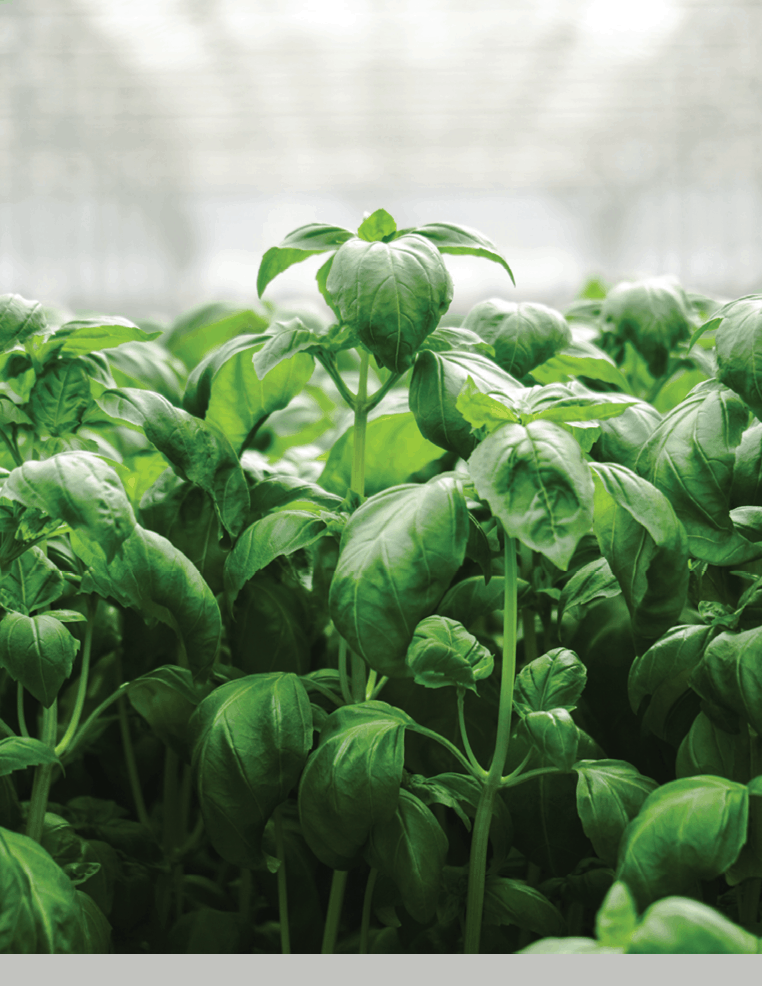
Gotham Greens’ expansion began almost as soon as the company started.
“For the first few years, we were focused on proving our business model, making sure it was financially sustainable,” says CEO and co-founder Viraj Puri. “And then we expanded to Chicago after about five years in business and that was successful.”
After three years of planning by Puri, co-founder and CFO Eric Haley and chief greenhouse officer Jenn Frymark, Gotham Greens’ original facility opened in 2011 in Brooklyn, New York. Next up was another Brooklyn farm, which opened in 2013, followed by two in 2015: one in Queens and one in Chicago — the company’s first footprint outside of New York. Twenty nineteen then marked the next step in Gotham Green’s evolution. That year, the company opened two more greenhouses: one in Edgemere, Maryland, and one in Providence, Rhode Island. Then, in May 2020, it opened a 30,000-square-foot facility in Colorado. Each new facility — and those still to come — are part of the company’s plan to be a major player in a localized and decentralized food system.
By the end of 2020, Gotham Greens had secured more funding to fuel future expansion amid a year where retail sales increased dramatically. In December, the company announced it had raised $87 million in a Series D funding round, pushing its total in capital raised to $130 million. According to Viraj, the money will be primarily used for expansion, both in terms of building new facilities and expanding current ones as the company heads into its new era.
“We’re going to be expanding to more geographies and expand our distribution via retail, via food service and getting our products into meal kits,” Puri says. “The other thing is to increase our operational capacity. All of our greenhouses were designed with the ability to increase size and expand the square footage to meet increasing demand. We’re going to be doing that, too.”
Why now for new investment?
Gotham Greens isn’t the only company to obtain new investment in the past few months. Recently, Kentucky-based AppHarvest went public with an IPO, raising $475 million in gross proceeds. Massachusetts-based Little Leaf Farms raised $90 million in private funding with an eye on expansion throughout the East Coast. Oishii, a New York-based, Japanese-style vertical farm producing exotic varieties of strawberries, announced Series A funding March.
The influx of cash into the industry — predicted to grow exponentially as more product shifts to greenhouses and vertical farming operations, according to Puri — isn’t likely to slow down any time soon. Puri notes that the market for CEA grown products in the U.S. and Canada is currently valued at $100 billion with only a small percentage of crop output coming from greenhouses and vertical farms.
“We’ve been advocates for growing this industry for a long time and I’ve been very excited to see that there’s a lot more retailer interest, consumer interest and investor interest in the space,” he says. “And I continue to see a lot of growth opportunity for this industry.”
In Gotham’s case specifically, Puri said the company weighed a public offering, but elected to not pursue that route now in favor of another round of funding. Way back in 2019, he says the company was beginning to explore other funding options and continued to do so into 2020 before the COVID-19 pandemic hit. That, he says, caused their food service business to slow to a crawl, but with the retail side more than picking up the slack. Gotham, like other companies in the ag space, were able to grow by solving food supply issues for leafy greens and herbs stemming from field producers primarily based on the West Coast unable to fulfill orders as expected.
“This accelerated expansion has been a work in progress for some time,” he says. “It wasn’t just ‘Hey, we arrived in 2020, the pandemic happened and then go raise a bunch of money and that.’ This was already happening. I think what the pandemic has sort of done is that it’s accelerated our expansion a little bit further because we’ve really been able to serve our value proposition to so many of our customers from a regional supply chain standpoint.”
Puri expects that trend to continue with more and more retailers becoming more comfortable with greenhouse suppliers and embracing food that can hit shelves within a few days of a harvest. Back around 2011, it was a lot of cold calling companies and pitching them on the concept for Gotham Green’s sales professionals. Now, Gotham Greens is on the shelves of major retailers like Target and Whole Foods.
“I think we paved the way for the entire industry,” he says. “I’m not trying to brag or say that with any hubris, but it was much more difficult back then for a retailer to bring in locally grown, greenhouse grown produce. Now, it’s seemingly every week or every month that a new company is doing it. It’s become much more mainstream — we don’t need to tell the story because it’s been proven.”
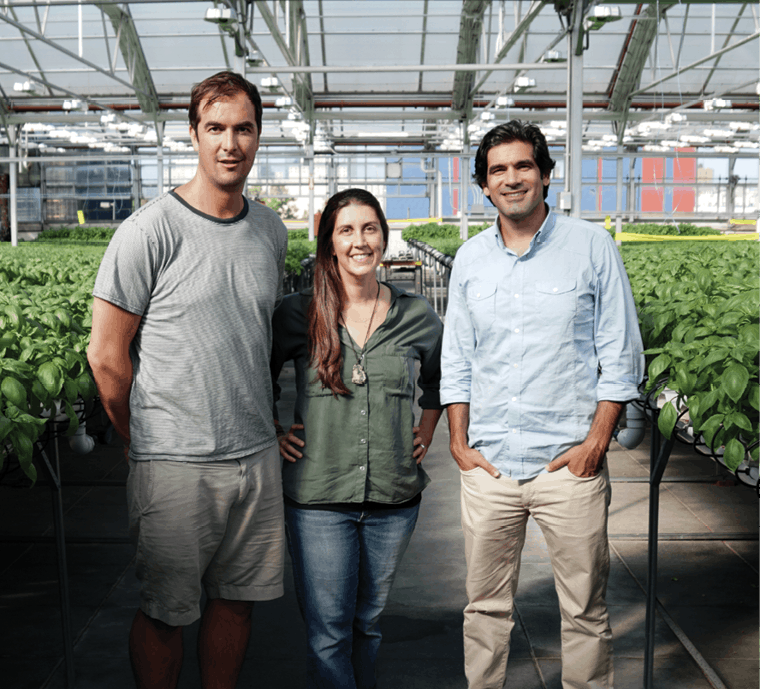
Communication is king
The core of what Gotham does — local food production — hasn’t changed, but the form it takes on has shifted slightly.
“The technology has moved a lot,” Frymark, the group’s chief greenhouse officer, says. “It wasn’t proven at scale yet. We were the first movers in this space and for the type of model we were going at.” The first Gotham greenhouse, she says, was really a proof of concept. The Gotham setup has changed over time too with the first four farms built on rooftops.
“That hyperlocal, urban location requires a certain type of technology for how you’re going to attach it to the building, as well as how you’re going to handle structural load concerns,” Frymark says.
Since then, as Gotham has open bigger facilities, they have moved the concept more towards being built on the ground. That, in turn, means there is in theory more places to build. They also use natural sunlight for production vs. supplemental lighting, which limited the number of places in New York City where a greenhouse could be feasibly built.
“We’re so focused on using the sun — it’s our most renewable resource and plant growth is the best under solar radiation,” Frymark says. “Land for a greenhouse with access to sun is really hard to find in New York City, so that was why we looked elsewhere.”
As the grower has become more decentralized, Frymark says the operation has continued to embrace technology more and more. To help on-site growers at each facility, data is collected at each facility and analyzed in detail to learn as much as possible from it. Even if it is not done directly by the different growers, a grower in Maryland can learn from what a grower in Denver is doing, and vice versa. At the head grower level, there are virtual team meetings each week to discuss what is happening at each facility and what the company can learn from each development. Frymark says that this is immensely helpful to Gotham Greens, as it helps growers continuously improve and was baked into the company’s model from the beginning.
“Greenhouse growing is half art and half science,” Frymark says. “They can walk the facility and see what’s happening with the plant’s physiology and handle the environment to get the desired yield and quality. But that’s a lot for the human mind to handle. I think giving people tools — the more you can build them out for people and help our talent, it makes us even better growers. I don’t want a culture where our greenhouses are competing against each other.”
This approach has been particularly useful during the on-going COVID-19 pandemic, when the world is changing rapidly, and businesses need to react quickly.
“There’s no sort of guidebook for how to deal with this,” Puri says. “So every couple of days there’s a new situation or a new circumstance to be aware of. You’re building the plane as you’re flying it so to speak, and it’s been mentally and physically exhausting for the past [several] months to have to make new decisions on things based on new information and new circumstances and changing guidance from government agencies and regulatory agencies and public health officials.”
“Being a greenhouse grower is a really hard job,” Frymark says.
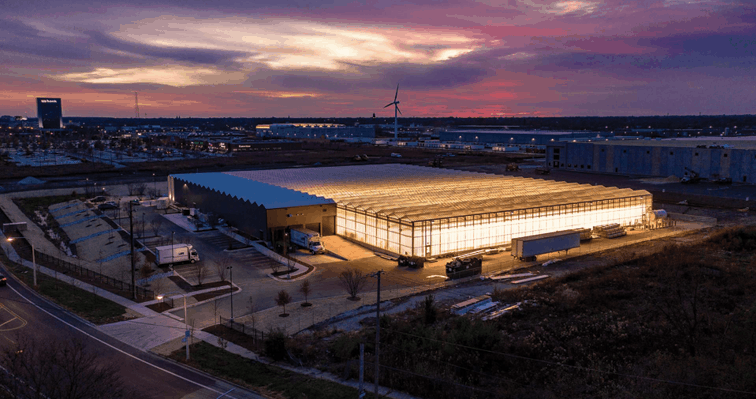
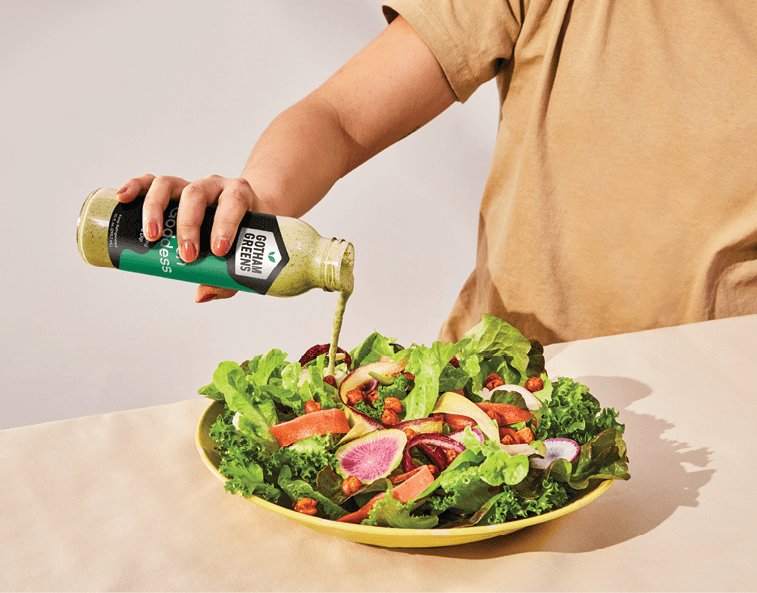
The next steps
In the last few years, Gotham has added to its product portfolio on the edges. In 2017, for instance, the company started selling so-called “ugly greens” that had blemishes or other defects and, while edible, not up cosmetic standards. It has also added chimichurri, pesto and different salad dressing made from its own products as a compliment to the main line of lettuces.
The produce, though, remains — in Puri’s words — ‘the star of the show.’ In the coming years, growth for the company’s business plan will still be about producing more leafy greens and herbs than trying out new products as greenhouse-grown products take a larger market share vs. field grown product.
That said, Puri says that Gotham Greens is looking outside of its current focus for potential future expansions. Nothing is imminent, but ideas have been floated around.
“A lot of people are already growing tomatoes and peppers, so we may not get into that. But certainty strawberries are of interest,” he says. “I think there’s a lot of room to grow even just in terms of what crops we’re growing.”
“It’s hard to say exactly what that’ll look like,” Frymark says. “But I think we’ll have tremendous success with our greenhouses and new products, and eventually bring even more new stuff to the market. We are really focused on leafy greens and herbs right now, but I think we have to be flexible and opportunistic and be open to considering other offerings.”
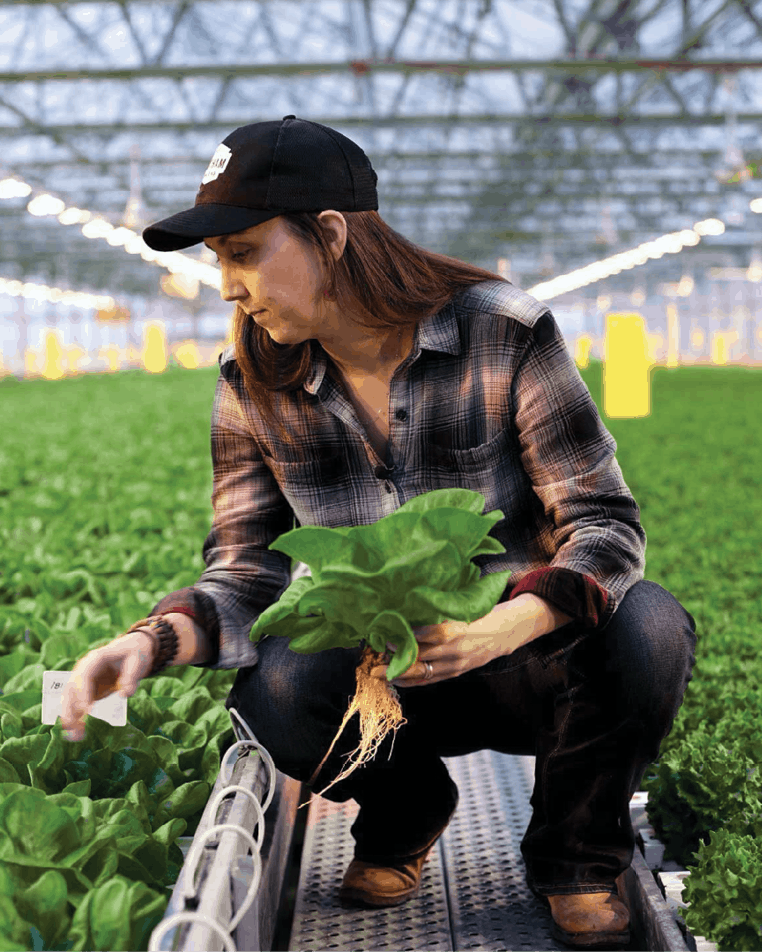
And, as expected, Gotham Greens is building another greenhouse — this time in Solano Valley, California, near the campus of UC Davis and in the state where one-third of the lettuce grown in the U.S. is produced. Announced on March 2, Gotham is building out a 10-acre facility that is expected to open later this year and will greatly increase the company’s output. It's the first phase of the California build.
Additionally, it entered a research partnership with the University of California, Davis. As part of the agreement, Gotham will work with UC Davis — which is building its own CEA consortium — to further research all parts of the indoor and urban agriculture industries. What exactly will come from this new venture is still to-be-determined — and it may be years before its full impact is understand — but it fits within what Gotham has done from the beginning: build.
“It’s an approach that combines going deeper in the existing markets with going broader to new markets,” Puri says. “The reason for going broader to new markets is that the business model was successful in New York because we felt like retailers were having to rely on a supply chain that was so far away.”
“Our thesis was that people in the Midwest are facing the same issue,” he continues. “People in New England are facing the same issue. Retailers in the Mid-Atlantic are facing the same issue. So, why not try to export the business model to other regions? And who better to do it than us because we have the experience doing it?”
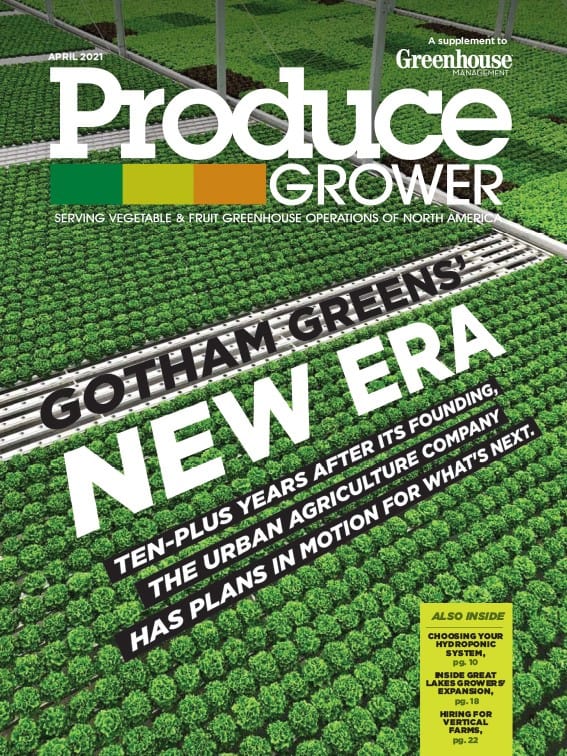
Explore the April 2021 Issue
Check out more from this issue and find your next story to read.
Latest from Produce Grower
- Chilli thrips (Scirtothrips dorsalis)
- GS1 US Celebrates 50-Year Barcode 'Scanniversary' and Heralds Next-Generation Barcode to Support Modern Commerce
- University of Florida offers Greenhouse Training Online program on irrigation water
- Flower trends in full bloom
- Nominate an outstanding leader
- New Florida Extension Agent Will Teach Stakeholders About Food Safety
- Paint it black
- Regular checkups





